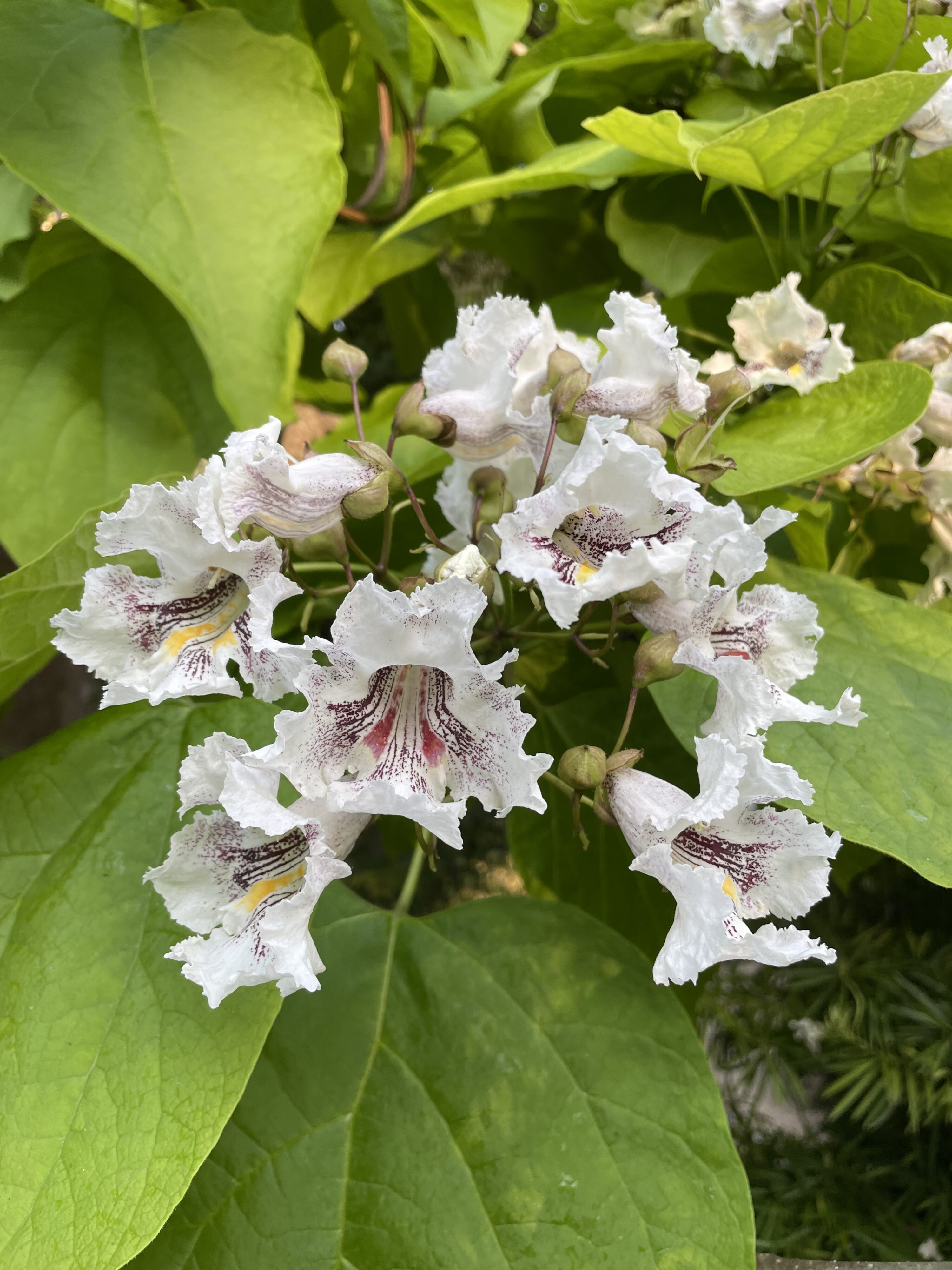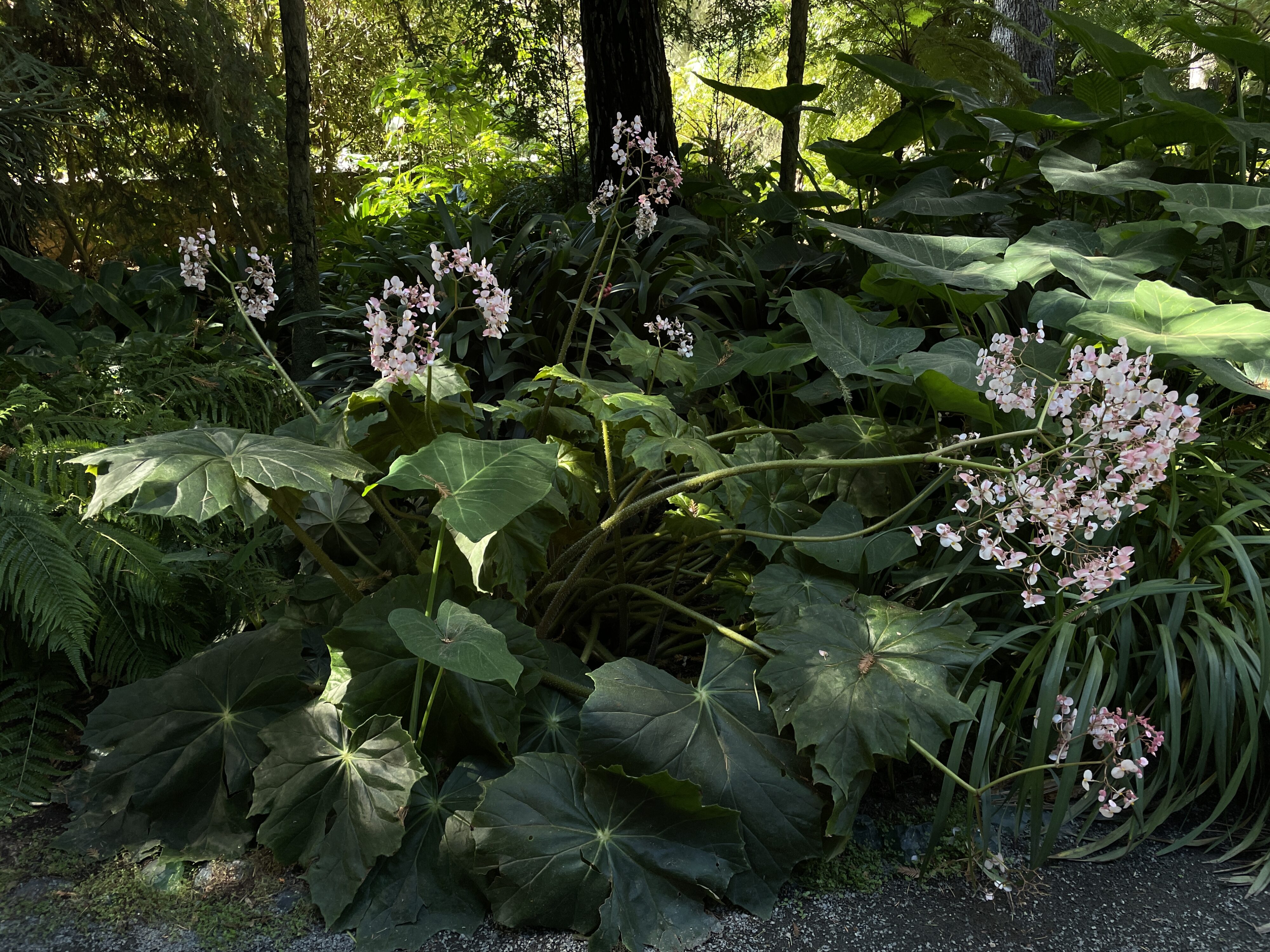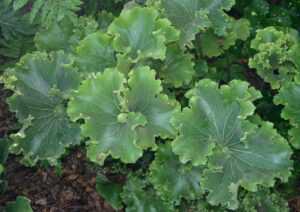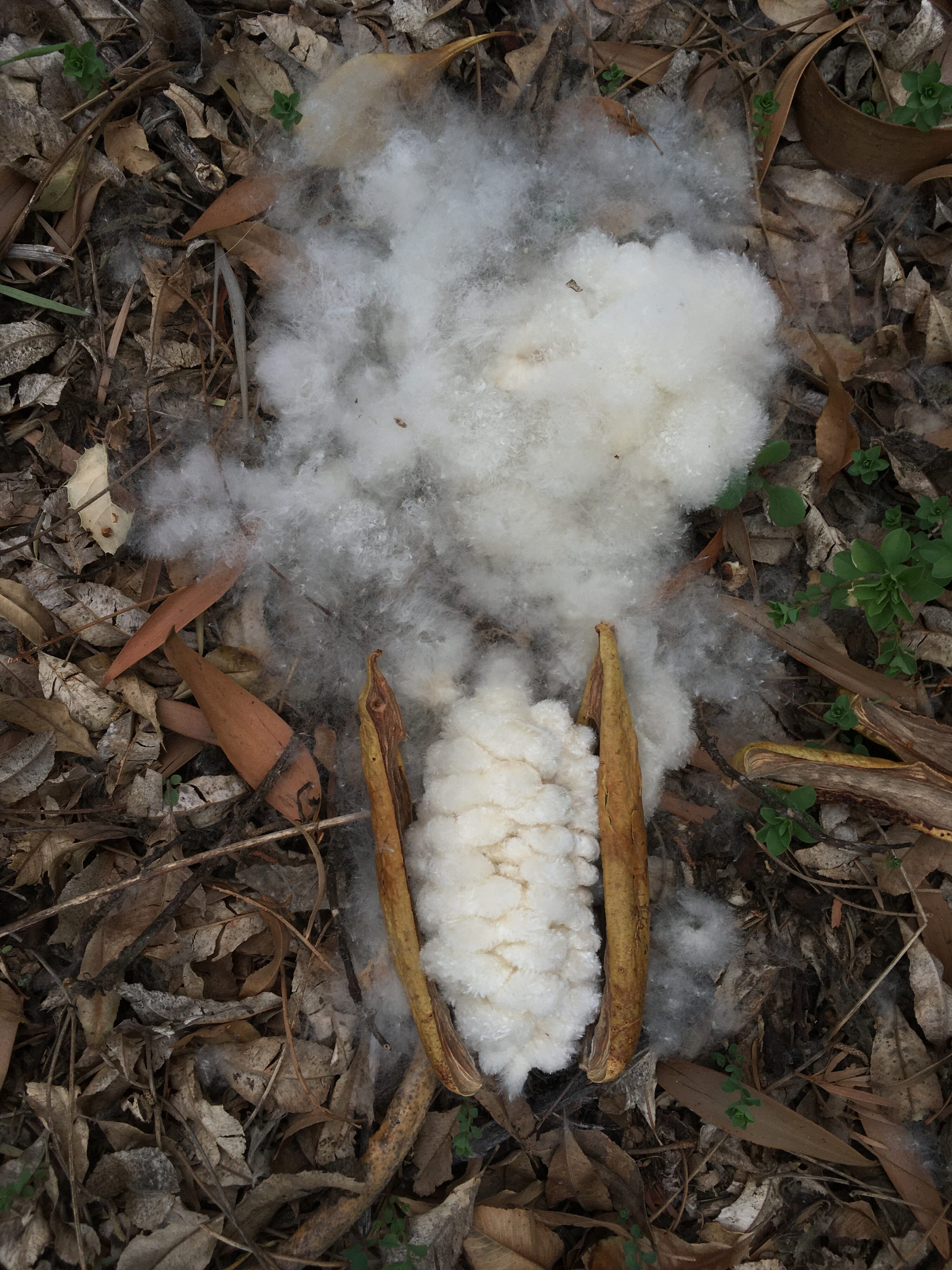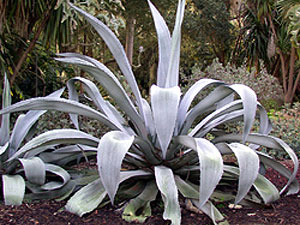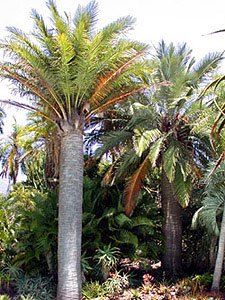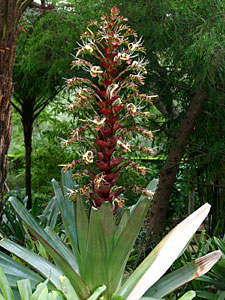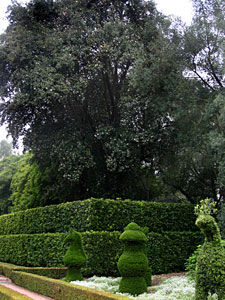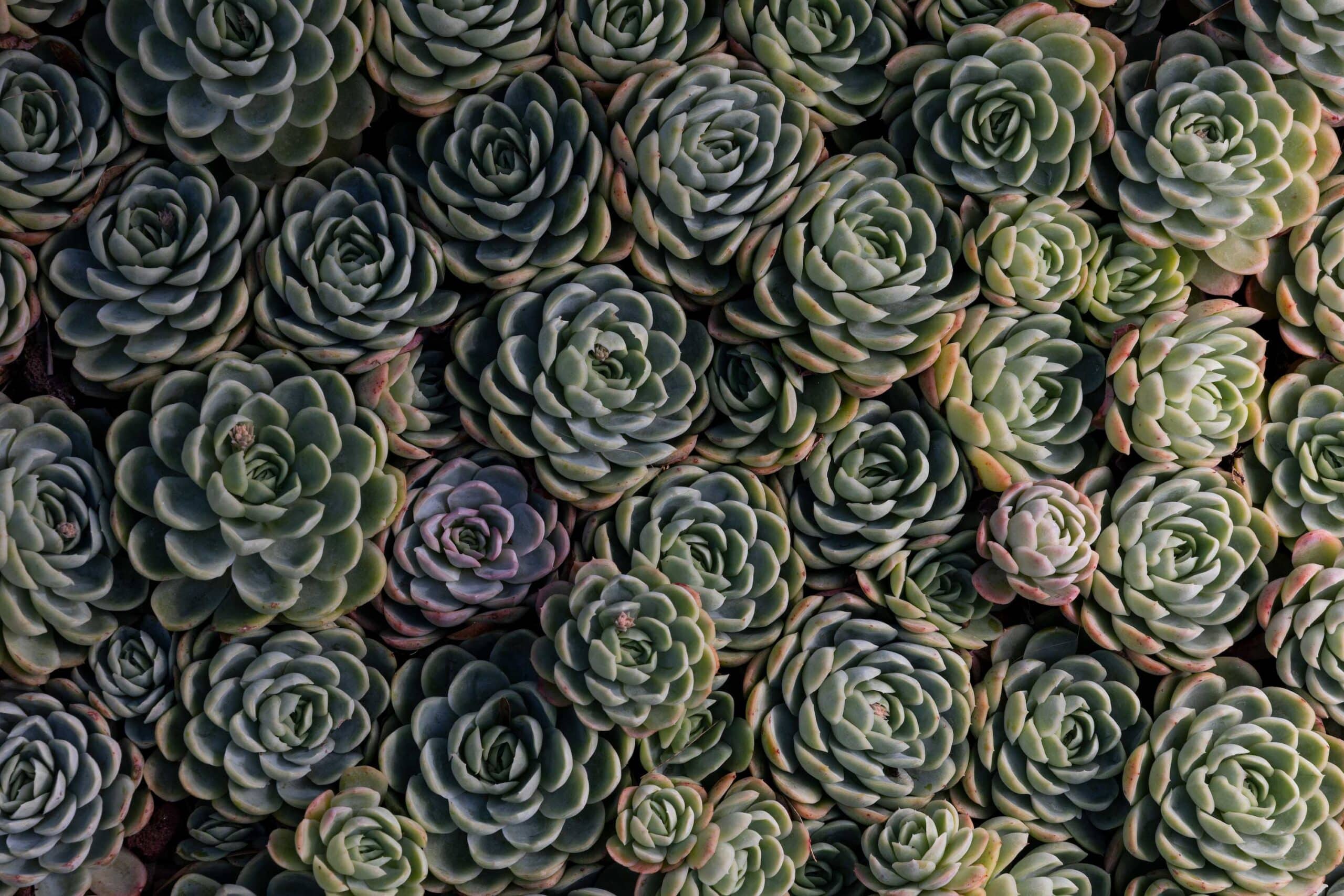
Plant Highlights
Plant Highlights
-
Catalpa speciosa
northern catalpa
Highlight Month:
July
Nativity:
Eastern United States
Growth Habit:
Deciduous trees with large pale green leaves to 80 feet in height. White tubular flowers with purple and yellow streaks and blotches in the throat are followed by long, thin seed pods giving it its common name.
Growing Requirements:
Full sun and regular water.
Features:
This member of the Bignoniaceae – the trumpet creeper family – litters the ground below with fragrant flowers in early summer.
Where at Lotusland:
In the Japanese Garden next to the Main Drive.
-
Begonia ‘Carousel’
Highlight Month:
July
Nativity:
Garden Origin
Growth Habit:
This is one of the many rhizomatous hybrid begonias. It forms a spreading clump of bright green leaves that are a great backdrop to the proliferous pink and white flowers.
Growing Requirements:
Grow in soil enriched with plenty of organic material. Keep uniformly moist. Most begonias grow best in partial shade.
Features:
Good to bring color and interest to the shade garden.
Where at Lotusland:
Fern Garden
-
Begonia ‘Lotusland’
Highlight Month:
July
Nativity:
Garden Origin
Growth Habit:
This variety is in the rhizomatous group of the large genus Begonia. Thick horizontal stems creep along the ground and support large, lobed leaves and sprays of small deep pink flowers.
Growing Requirements:
Light to deep shade and regular water.
Features:
This variety was introduced into cultivation by Rudy Ziesenhenne, a begonia grower and taxonomist, who had a nursery in Santa Barbara. It was a chance seedling in his greenhouse without a name until Ziesenhenne was prodded by a National Geographic photographer to give it one. At the time, many begonias were being planted in a new Fern Garden at Lotusland, so he honored Madame Walska by naming this new hybrid after her estate.
Where at Lotusland:
Fern Garden
-
Farfugium japonicum ‘Crispatum’
leopard plant
Highlight Month:
July
Nativity:
Garden Origin
Growth Habit:
Farfugium grows in clumps of leaves to two and a half feet tall. In bright light situations, it will produce a tall inflorescence (to three feet) with a cluster of bright yellow flowers. Farfugium are members of the Asteraceae, or sunflower family.
Growing Requirements:
Light to deep shade and regular water.
Features:
The species is native to Japan, Taiwan and Korea. Horticulturists have made many selections for various growth habits. This cultivar has crimped and ruffled leaves in contrast to the very smooth edges of the species. Lotusland is home to other cultivars featuring yellow-splotched (“Aureo-maculata”) and white-variegated (‘Argentea’) leaves, as well as the giant variety, F. japonicum v. giganteum.
Where at Lotusland:
Fern Garden
-
Nelumbo nucifera
sacred lotus
Highlight Month:
July
Nativity:
Ukraine to N. Iran, Russian Far East to Tropical Asia and N. & NE. Australia
Growth Habit:
Lotuses are aquatic perennials. They grow from tubers under the soil in still or slow-moving fresh water at a depth of six inches to three feet (or more). The large leaves and flowers rise above the surface of the water during the summer months in most temperate regions, although in the tropics, they may grow nearly year round.
Growing Requirements:
Soil depths should be a minimum of one foot and water depths can range from six inches to three feet. Full sun or at least six hours of sunlight a day will ensure vigorous growth and maximum flower production.
Features:
Lotus leaves are coated with a superhydrophobic waxy layer that sheds water in a self-cleaning mechanism called the “lotus effect.” The flowers of sacred lotus are in shades of pink or white while the closely related American lotus, Nelumbo lutea, has pale yellow or cream-colored flowers.
Where at Lotusland:
In the Water Garden and the Japanese Garden ponds.
-
Ceiba speciosa
silk floss tree
Highlight Month:
July, November
Nativity:
It is native to tropical and subtropical forests in South America (NE Argentina, Bolivia, Paraguay, Uruguay, S. Brazil).
Growth Habit:
Ceiba speciosa is a large charismatic tree featuring a bottle-shaped trunk. It is fast-growing and can reach heights of 30’ in just a few years and will mature around 40-60’ tall. The green trunk develops large attractive grey prickles with age. In the fall, the tree loses its palmately compound leaves and erupts in an impressive display of pink hibiscus-like flowers with creamy-white centers. Large fruit capsules split open the following spring to release the seeds surrounded by cottony fluff that can be used as stuffing or insulation, hence the common name “silk floss tree.”
Growing Requirements:
Plant in full sun with good soil drainage and water sparingly.
Features:
The genus Ceiba comes from the Spanish interpretation of the Caribbean Taino word meaning “giant tree.” This species is also called “palo borracho” in Spanish or “drunken stick,” referencing the awkward growth patterns sometimes found in older specimens. Ceiba (Chorisia) was previously grouped in the bombax family, Bombacaceae, along with other well-known members such as durian (Durio), baobab (Adansonia), balsa (Ochroma), and shaving brush tree (Pseudobombax). All have now been incorporated into the mallow family, or Malvaceae.
C. speciosa first was introduced to California horticulture by Dr. Francisco Franceschi in 1900. It is frequently planted along highways in Southern California and can be easily recognized in the fall when in flower.
Where at Lotusland:
Arboretum- but can be viewed from the Cypress Allée
-
Agave franzosinii
Highlight Month:
August
Nativity:
A. franzosinii is only known from cultivated plants in Europe and the United States.
Growth Habit:
This large agave is easy to spot, with glaucous blue arching leaves. Be sure to leave room in your garden for this plant as it can reach 8 feet tall and 10 feet wide! Known only in cultivation, this species exhibits variation in leaf shape and color due to seedling variation. The plant will occasionally send out offshoots from underground rhizomes. The flower stalks may reach over 30 feet tall. After flowering, the plant dies.
Growing Requirements:
Full sun, requires little water once established.
Features:
A. franzosinii has large curving whitish-blue or gray leaves. The plant seldom flowers, but when it does it produces a huge spike of yellow flowers in summer which attract birds and insects.
Where at Lotusland:
A mixed planting of Agave franzosinii and Agave americana borders the Main Lawn.
-
Jubaea chilensis
Chilean wine palm, coquito palm
Highlight Month:
August
Nativity:
Central Chile. These palms are rare in the wild, due to centuries of being felled for their sap which is very sweet and is used as a sugar extract or fermented for wine. They are now protected by the Chilean government.
Growth Habit:
A very slow-growing palm which at maturity reaches 75 feet tall with a trunk over three feet across. Most have hanging lower fronds, but some have a more upright crown; both forms can be seen in the picture to the left.
Growing Requirements:
This palm grows well in temperate subtropical climates, though not in the true tropics. It is cold-tolerant and can withstand frost even when young. It grows best in full sun and well-drained soil.
Features:
Jubaea chilensis has a thick gray trunk crowned with feathery grey-green fronds. It has very small flowers, which grow on a 4′ long stalk hidden under the leaves. These are followed by orange fruit. The common name ‘coquito’ refers to the one-inch nut inside the fruit. These look and taste like miniature coconuts.
Where at Lotusland:
There are approximately 40 mature Chilean wine palms at Lotusland dating back to the early years of the estate when it was owned by Ralph Kinton Stevens (1882-1913). They are planted mainly in the Blue Garden and Aloe Garden. Young specimens have been planted in the Cactus Garden and at the visitors’ entrance gate on Cold Spring Road.
-
Alcantarea imperialis
Highlight Month:
August
Nativity:
Mountains outside Rio de Janeiro, Brazil
Growth Habit:
This is one of the larger bromeliads, forming a rosette of leathery leaves up to 4 feet across. In nature it grows clinging to rock faces, slowly accumulating fallen organic debris to create its own soil.
Growing Requirements:
Plant in humus-rich soil in light shade and keep moist.
Features:
It may take plants ten years or more to reach blooming size. Once the large inflorescence is finished, the plant dies, but it usually makes one or more offsets that can be removed and grown on.
Where at Lotusland:
Several in the Upper and Lower Bromeliad Gardens.
-
Lagunaria patersonia
cow itch tree, primrose tree
Highlight Month:
August
Nativity:
Lord Howe and Norfolk Islands and coastal Queensland, Australia
Growth Habit:
Large, evergreen tree to 40 to 50 feet, becoming pyramidal in old age.
Growing Requirements:
Tolerates drought, salt spray and many soil types. It is frost tolerant to 23° F.
Features:
Seed capsules are filled with tiny irritating hairs, giving it the common names cow itch or itchy bomb tree.
Where at Lotusland:
Behind the hedges of the Parterre below the Star Fountain.


